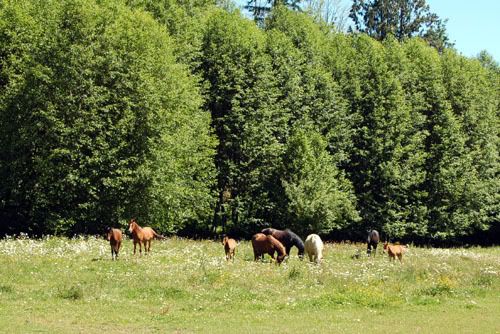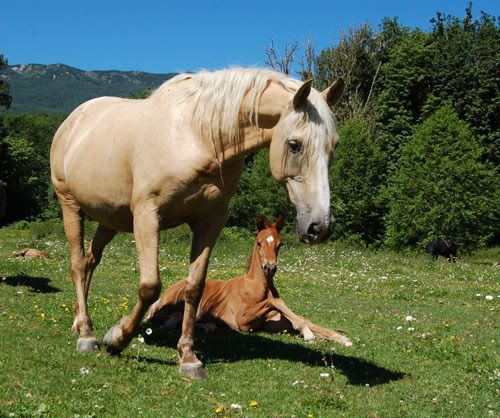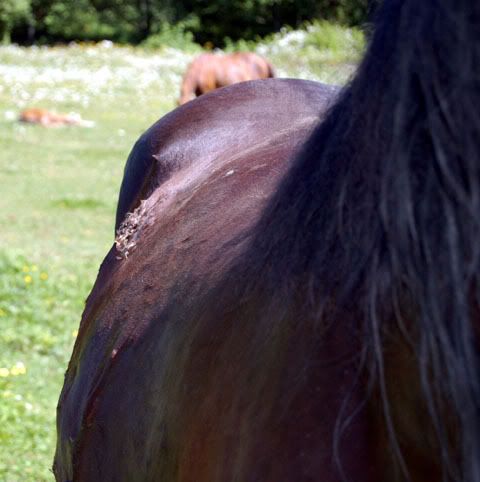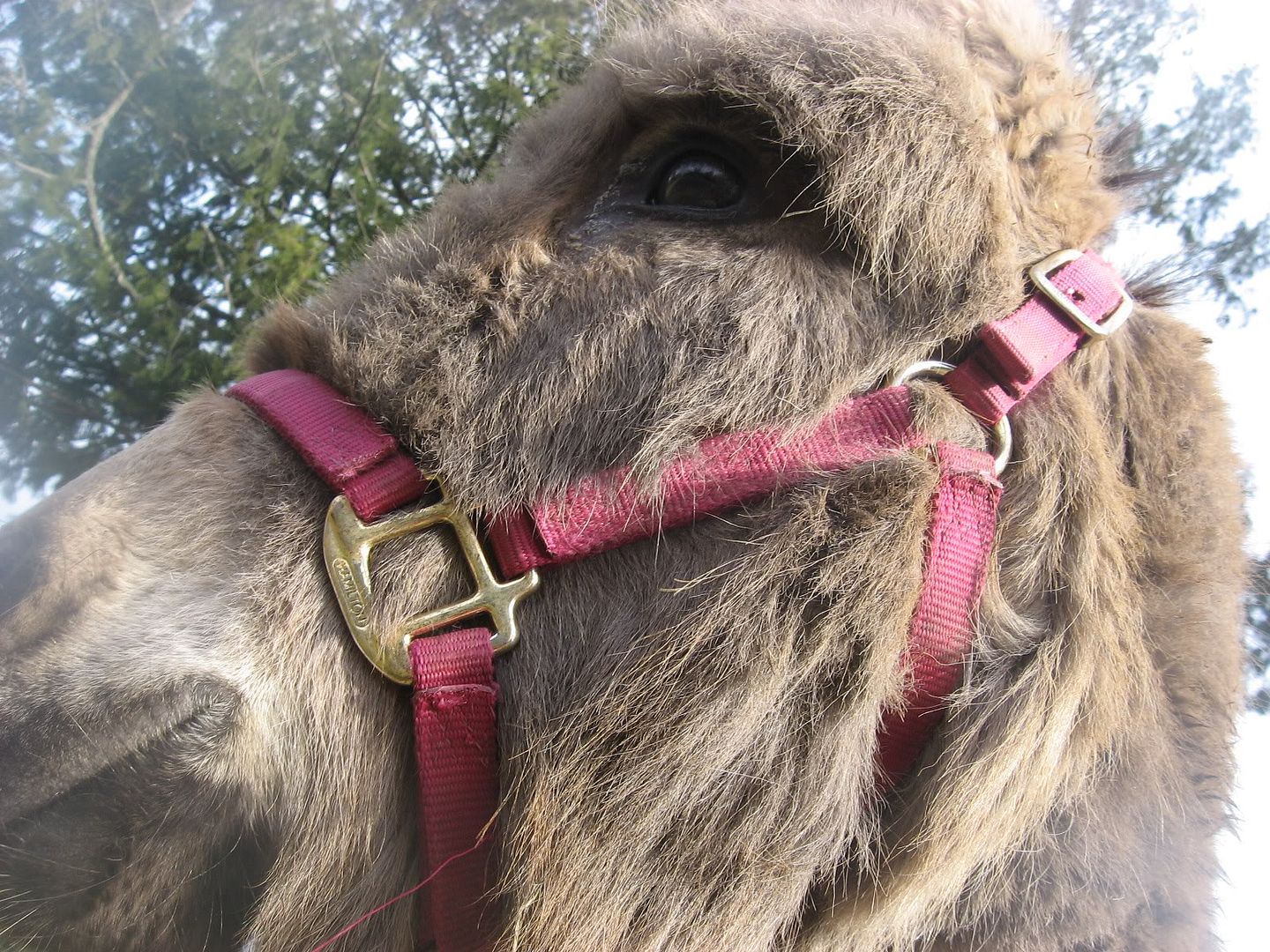I first wrote this story in early June and posted it at Carpenter Creek with a "To Be Continued" promise...and until last week there was no continuation...

A herd of domestic~turned~feral horses.
An idyllic scene greets your eyes. Tranquil. Peaceful. Picturesque. The long, narrow valley filled with daisies in early June, the foothills of Mt. Baker creating the perfect backdrop. A small herd a horses grazes peacefully. The mares are fat with the spring grass, their foals napping in the mid morning sun. Nothing at all to make you think things were out of place.
So why has Animal Control been called in?
This little herd, which looks so harmonious, has spent the winter fending for themselves. Before the spring grass, it was the harsh, cold winter with nothing but snow and tree bark. Rather than fat and shiny, they were starved, ribs and hips poking out from shaggy winter coats. Two stallions, two mares, and their offspring were given freedom to roam not only the valley, but the hillside across the dangerously narrow, winding road without any regard for motorists or logging trucks that may be making their way up or down the mountain.

A palomino mare approaches cautiously, protecting her colt.
Typically in the wild, there will be one herd stallion who will chase away his offspring by their second year. This keeps herds from inbreeding. Young stallions band together in what are known as bachelor bands until they are able to steal a mare from an established herd and begin their own. But in this situation, both stallions, ages six and seven, were born on the property and live a daily existence with the two mares. They get along, so long as there’s not a mare in heat. Once one of the mares is in season, the battles begin. Rearing, striking, biting and kicking. Battle scars mar both bodies. Wounds have festered and sport proud flesh due to being left without treatment.

Wounds left to fester on the side of this stallion have created scar tissue.
The hooves of these horses are long. The ground is not the hard desert rock that most wild horses travel across, so there is no natural wearing. When they get too long, they chip and break off, sometimes leaving the hoof so short that the horse ends up lame. Thankfully, these horses haven’t the need to travel 20 miles to find water, or they’d never make it. In fact, aside from the summer grass, the only blessing to these horses is that there is a creek running through the property which gives them fresh, clean water to drink.

Stallions, aged seven and six, run free with the mares.
Neighbors have complained for years. They’ve seen the horses in winter. They’ve slowed down for them as they’ve crossed the road. But because there are stallions in the mix, finding suitable homes or rescues is difficult. When a warrant is issued, the animal control officer (ACO) has just 24 hours to move the horses. Because this particular band hasn’t been handled, capturing can be rather tricky. On the first attempt, only two of the ten were caught and relocated. Now the ACO is struggling to get her crew back together on a single day that works for everyone. The crew being a band of volunteers with enough trailer space to haul two intact stallions, two yearlings, and two mare and foal pairs.
And so the little herd waits in the sun, unaware of their future, content in a field of daisies.

A curious stallion stands watch.
Last week I spoke with ACO. Skagit County has had their plates full with abandoned and neglected horses, not to mention the recent puppy mill bust of nearly 600 dogs. Snow up on the mountain road has made it impossible to get trailers up there, but feed has been brought in. The 'owner' has skipped town. A rescue effort is back in the works. With any luck I'll be able to attend and get more photos for you of this little herd.






















































